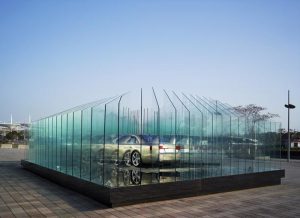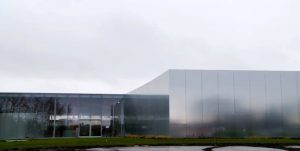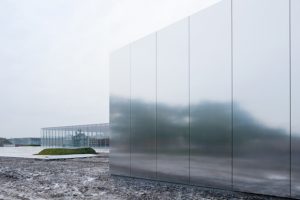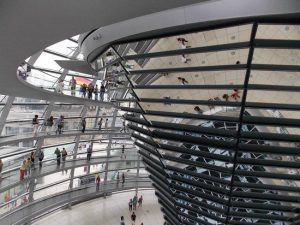INTERACTIVE ARCHITECTURE
|
With the spread of media, massive information has been broadcast by diverse channels which results in depriving human being of the sense of real thing. Architecture, as a type of spatial carrier, directly transmits the image, space& scene experience to the public. While the situation changes, quantities of elevations or interface are overlapped by all kinds of LED screen. Moreover, visual reality and augment reality concept and devices are applied into daily life at a fast speed, and someone predict that in future building six facades in concrete is enough and all the contents are displayed in devices. If buildings only provide a box with the simple purpose of defining the exterior and interior space, buildings will be regarded a shelter without any extra experience. It cut down the relationship between people and architecture especially on public buildings. For solving this phenomenon that architecture has been weakened gradually, from my perspectives, we should emphasize the order from interior to exterior and adopt different methods to strengthen scene experience of buildings in layers instead of simply laying stress on elevations, which promote the interaction. Two typical cases, Reichstag Building and AUDI Exhibition Glass Pavilion can clearly express the way to increase the mutual communication between viewers and buildings. Reichstag Building, as a refurbished project, it adopt completely transparent glass to show the history- valued elements to the people and protect the heritage by isolation in the meanwhile. For the new built part of building, it choose the completely reflective glass to install interior to give the extra meanings to visitors, which attracts many people to visit everyday just for the building itself. The second case called AUDI Exhibition Glass Pavilion by FCJZ, is a kind of exhibition building showing the speed of cars. In this project, you can witness that it use the rhythm of layout of glass. Instead of giving the whole image to people, it reveals the transformation of the shape of car with you moving in different direction and matches the concept of speed. Therefore, two cases above explain the interaction between people and architecture and also show the specific way of architectural design. Diverse materials can be sculptured into different space by feelings such as wood, concrete, bricks and so on. And as a kind of widely used material, glass has already been used in modern buildings and it has more feature and types. So, firstly, it can be test in the attribute of reflection ratio and adopt different types of combination to shape the space by the attempts of making physical models. Secondly, by studying the theory of spatial order, it can match the expression of materials with the spatial order tightly. Besides, by the precedent research of glass buildings, some interactive points can be adopt or optimize to increase the interaction between people and buildings. As Yungho Chang said, architecture should be architecture itself. Architecture, should impresses the people from the elevations, space, even the light or air. Instead of using some technical devices putting interior to interact with visitors, building, from the beginning, it influenced people by real materials. Glass, as a developing material, can be a suitable one to promote architectural interaction. REF: 1.Interactive Media Façades In The Urban Context https://www.modul.ac.at/uploads/files/Theses/Master/Thesis-2011-Wachlowski-Alexander.pdf 2.Media and Architecture http://www.mke.hu/sites/default/files/attachment/theses_pasztorek.pdf 3. Material-based design computation by Author: Oxman, Neri |



